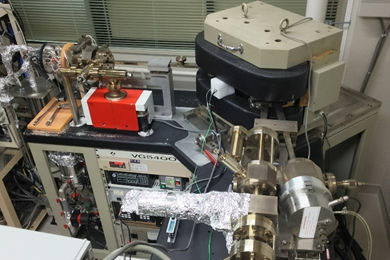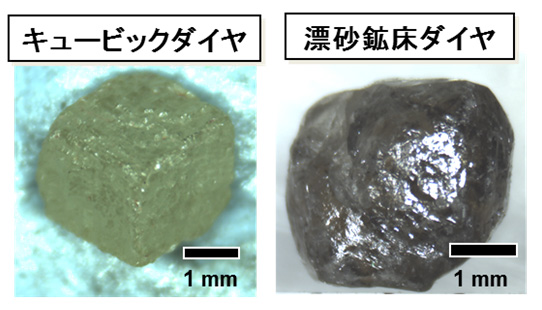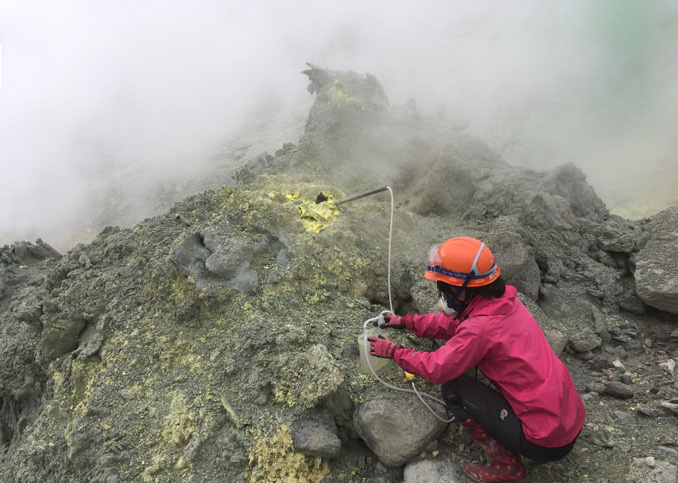- HOME
- Research
- Researcher's Profile
- Hirochika SUMINO
Researcher's Profile

- Professor
- Hirochika SUMINO
- Geochemistry and Environmental Chemistry
Biography
| March 1996 | B. Sc. in Chemistry, Department of Chemistry, Faculty of Science, The University of Tokyo(UTokyo) |
|---|---|
| March 1998 | M.Sc. in Chemistry, Department of Chemistry, Graduate School of Science, UTokyo |
| September 2000 | Withdraw from Department of Chemistry, Graduate School of Science, UTokyo |
| October 2000 | Research Associate, Geochemical Research Center, Graduate School of Science,UTokyo |
| April 2001 | Ph.D in Chemistry, UTokyo |
| April 2015 | Associate Professor, Department of Basic Science, Graduate School of Arts and Sciences, UTokyo |
| April 2020 | Associate Professor, Department of General Systems Studies, Graduate School of Arts and Sciences, UTokyo |
| February 2022 | Professor, Department of General Systems Studies, Graduate School of Arts and Sciences, UTokyo |
| April 2022 | Professor, RCAST, UTokyo |
Research Interests
In order to understand the formation and evolutionary process of the Earth resulting in the present global environment, we are conducting isotope geochemistry and environmental chemistry research by determining the concentrations and isotope ratios of noble gases and other highly volatile elements in meteorites, rocks, and minerals derived from the deep interior of the Earth. In particular, we aim to reveal the origin and cycling of water, which makes the Earth a habitable planet.
Noble gas isotopes (helium, neon, argon, krypton, and xenon) are useful tracers for clarifying the origin and history of natural samples because they have diverse origins. However, most of them are extremely scarce and require special analytical techniques. We have developed state-of-the-art mass spectrometers for ultra-sensitive analysis of noble gas isotopes in various types of samples, solid, liquid, and gas.
Helium isotope ratios in fumaroles and hot springs in volcanoes can be used as an indicator of the activity of magma that causes eruption disasters. The eruption history of a volcano can also be revealed from the helium and argon isotopes in the rocks due to the radioactive decay of other elements and cosmic ray irradiation at the surface.
We are developing a method to evaluate the degree of eruption imminence and to predict the post-eruption processes based on the noble gas isotope ratios of various volcanic products.
Where the groundwater came from and how long it has been flowing underground are important in assessing the quantity and safety of groundwater as a water resource. Analysis of tritium, a radioactive isotope of hydrogen, and 3He, an isotope of helium, provides information on the residence time of groundwater.
We contribute to disaster prevention and resource assessment using noble gas isotope analysis and promote the understanding of global environmental change in the past, present, and future.

- fig.1. Magnetic sector mass spectrometer for noble gas isotope analysis

- fig.2. Natural diamonds derived from the Earth's deep interior

- fig.3. Collecting volcanic gas samples from a fumarole
Award
- December 2013 The Mass Spectrometry Society of Japan Research Award
- May 2017 The Geochemistry Research Association Award for Young Scientist
Keywords
Geochemistry and Cosmochemistry, Environmental Chemistry, Isotope, Mass Spectrometry, Radiometric Dating, Volcano Monitoring
Educational Systems
- Department of General Systems Studies, Graduate School of Arts and Sciences
- Department of Chemistry, Graduate School of Science
- Department of Advanced Interdisciplinary Studies, Graduate school of Engineering

 igcl.c.u-tokyo.ac.jp
igcl.c.u-tokyo.ac.jp